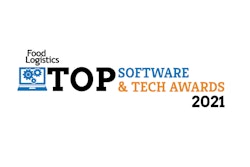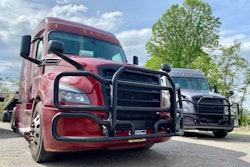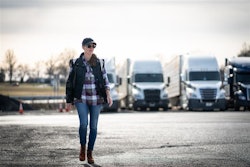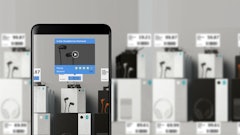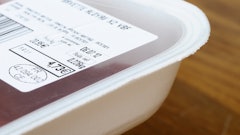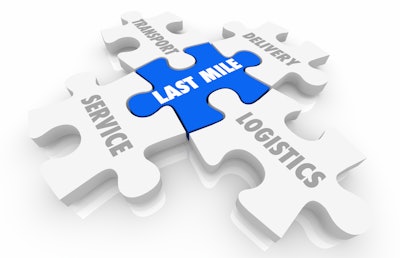
Last-mile delivery in India has undergone a dramatic change over the last decade on the back of modern technologies. The food and beverage (F&B) industry has been at the forefront of adopting these technologies to improve delivery systems. The new ways of managing food delivery came on the heels of the global pandemic that changed consumer behavior, pushing more and more people toward e-commerce.
A recent Deloitte survey states, "more than ever, customers just want to get their food and go. During the COVID-19 pandemic, they've started ordering takeout and delivery more often (delivery and takeout orders have continued to increase, up 14% to 68%), and almost half of our survey respondents say they don't see their habits going back to pre-COVID-19 levels anytime soon."
Besides safe delivery or takeout, customers also want the option for cashless payments, delivery personnel's health updates and end-to-end transparency of their orders. They also want a flexible online buying experience, where they can make changes in their shopping list depending on convenience. These customers are also ready to pledge their loyalty to the brand, provided companies fulfil their diverse needs.
Given the change in scenario and customers' behavior, the future of the global online food delivery services market is on a growth trajectory. It is expected to grow from $115.07 billion in 2020 to $126.91 billion in 2021 at a compound annual growth rate (CAGR) of 10.3% and reach $192.16 billion in 2025 at a CAGR of 11%.
Despite this expected growth, executing the last leg of the supply chain operations involves a plethora of challenges that weigh down the overall supply chain and last-mile operations, making its implementation most expensive. These challenges include same-day/hourly delivery, end-to-end visibility, lack of logistics and legacy information-technology architecture. All such issues can be solved by optimizing last-mile delivery, which will reduce the shipment's total cost. Other than that, the following pointers can further help in overcoming the challenges.
Third-party logistics provider affects business
With 80% of today's customers willing to pay extra for faster delivery, keeping up with the customer's expectations has become a significant challenge. Inefficient routing practices, manual dependencies for allocating tasks and poor management of third-party logistics providers make it extremely difficult to shrink delivery turn-around-time and threaten the entire shipping process. It also reduces profit margins.
The issue can either be addressed by adopting an integrated network model that covers all aspects of the supply chain and logistics process or by developing an in-house delivery system that supports existing and future expansions of the business.
High perishability risk
The on-demand world is different from that of conventional deliveries, especially when it comes to groceries and other perishable items. In order to cater for this segment, companies across the board have adopted technologies and other digital tools that can keep a check on operations and eventually at the cost.
These digital tools enable companies to manage high demand with ease through crowdsourcing and transforming each delivery experience with gamification. The tools provide businesses with real-time tracking, pre-built integrations, auto allocation and route optimization. The concept of these tools is to make the process of deliveries easy and faster, minimizing the risk of spoilage of perishable goods.
Contactless food deliveries
In the post-pandemic world, people will continue to isolate themselves; thus, the trend of contactless deliveries will increase incrementally. To cater to the rising demand for contactless deliveries, companies adopted various means to deliver goods during the pandemic. Among all, deliveries via drones have captured much attention.
Companies, including e-commerce firms, are looking into various aspects of drones and how they help fill the void in last-mile deliveries. So far, only tech giants have launched drones on an official basis. However, it is a technology that needs financial stability and governmental regulation tethering before it is cultivated to its full potential.
Perfecting last-mile delivery
Competition in the F&B industry has increased tremendously and is only going to keep increasing. Hence, firms in this space are focusing on improving their last-mile deliveries. So, what can F&B companies do to excel in perfect last-mile delivery? Simply put, they should use an end-to-end toolkit for last-mile delivery efficiency that includes features like real-time driver tracking, dispatch planning, effective fleet management and technology that’s integrated with analytics.
Hence, companies can use dynamic routing to allow managers to track their delivery executives and fleet on a real-time basis. It would recommend efficient routes that deliver packages faster and immediately trigger alerts via SMS in real-time if unnecessary diversions, prolonged stoppages and vehicle idling. It optimizes delivery routes in real-time based on traffic congestion, weather conditions, one-way windows, delivery urgency and more while keeping the drivers informed with real-time information.
Auto dispatching software helps plan routes, allocates a number of tasks per driver and even pinpoints driver location. It is instrumental in reducing inefficiencies, as it saves time and decreases the number of drivers. It also eases the entire process, helping to reduce the mounting costs that drive up last-mile delivery costs.
Similarly, proof of delivery (PoD) adds greater transparency to the entire system of last-mile services. It is brief documentation with a signature from the recipient, date and time stamp, photo of the package and other details, which confirm that the item has been delivered. The PoD is usually integrated with a mobile application that features photo collection, signatures, barcodes and notes, which drivers can feed while delivering the parcel.
Finally, leveraging a modern logistics platform built by savvy last-mile solution providers helps businesses benchmark key business indicators accurately and improve service level adherence agreements. It provides logistics stakeholders with a single view into critical delivery benchmarks like the performance of delivery executives, delayed deliveries, customer ratings, ETA adherence, pending deliveries and more.
With steep competition among every logistics company, focusing on customer experience is the key to success. The idea is to keep the system as transparent as possible for the customers and open up all communications channels.
Empowering customers to be a part of the real-time feedback loop and allowing them to talk to the driver if need be is a good strategy. Strengthening the delivery service through SMS notifications also helps. Taking customer feedback through occasional consumer surveys and resolving a customer's complaint is best to delight a customer. This, in turn, ensures their undying loyalty to the very end.




